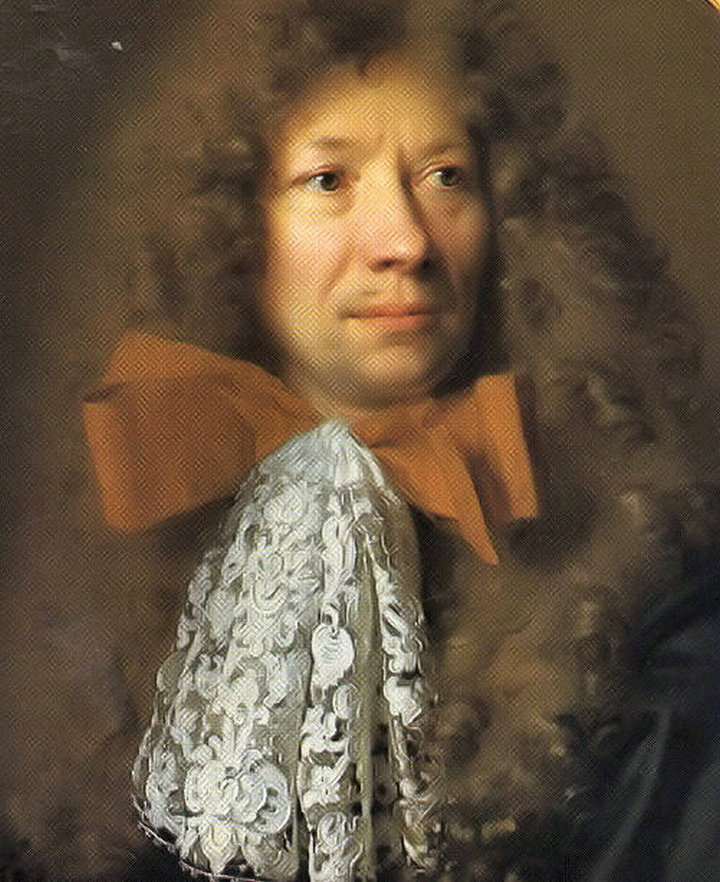Adam Frans van der Meulen


Adam Frans van der Meulen (Brussels, January 11, 1632 – Paris, October 15, 1690), was a Flemish Baroque painter specialising in battle scenes. He was active first in Brussels, where he was a pupil of Pieter Snayers, the famous painter of war figures, still lifes, animals and hunting scenes. From the 1660s onwards in Paris.
Specializing in battle and hunting paintings, he reinforced the team responsible for the image of the King. He accompanied Louis XIV on all his travels in all his residences and In all its wars. He also produced numerous cartoons for the Gobelins factory.
His style is recognized by the subtlety of the line, the precision of the atmospheric perspective and the surfaces marked by flat surfaces in the wash.
In 1646, he was a pupil of Pieter Snayers in Brussels, then part of the Antwerp school, before entering the service of the Spanish Archdukes. Mastering the art of representing horses and landscapes. His first work as an independent artist was done in Brussels. He painted genre and history pieces. He joined the painters’ guild in his native city, Brussels, in 1651. Focussing his art on representing horses and landscapes.
His fame crossed borders and in 1662 was called to Paris by Jean-Baptiste Colbert, at the instance of Charles Le Brun, to fill the post of battle painter to Louis XIV of France.
Van der Meulen succeeded in imitating and perfecting the style of Snayers that his works were drawn across the borders. French Minister Jean-Baptiste Colbert invited, on the recommendation of first court painter Charles Lebrun in 1664, Van der Meulen to work in French court service.
His paintings during the campaigns of Flanders in 1667 so delighted Louis that from that date van der Meulen was ordered to accompany him in all his expeditions. In 1673 he was received into the Académie royale de peinture et de sculpture, attained the grade of councillor in 1681, and died full of honors in Paris in 1690.
According to Houbraken, he was famous for his battle scenes (Conquêtes), before being invited to France. In the wake of the armies of Louis XIV, he painted the battle against the Southern Netherlands, including the intake of Charleroi (June 2, 1667), from Aat (June 6, 1667), from Namur (June 30, 1667) of Lille 1667), the arrival of the king at Tournai, the entry of Louis XIV together with Queen Maria Theresia in Dowaai (July 23, 1667) and the convocation of Kamerijk (March 28, 1677 to April 5, 1677). Van der Meulen became involved in the invasion of his own country as a South Dutchman. Many of these paintings were possible in the hands of Maximilian II Emanuel van Beieren (or who made copies) and can be seen in the Schleissheim Palace near Munich.
He is best represented by the series of twenty-three paintings, mostly executed for Louis XIV, now in the Louvre. They show that he always retained his Flemish predilections in point of color, although his style was modified by that of the French school.
Adam Frans van der Meulen ran a flourishing workshop that assisted him in completing private commissions for patrons that did not belong to the court of Louis XIV. He also designed tapestries for the Gobelins factory that depicted accurate historical details of the battles, and created paintings of hunting parties and landscapes.
He was appointed to a high position in the Royal Academy.
Van der Meulen lived and worked in the Manufacture des Gobelins in Paris, married in 1679 with Catherine de Lobré and married in 1681 with Marie de By, a cousin of Lebrun, who gave him six children. In 1669 Louis took XIV Van der Meulen by wearing his son at baptism.
After his first wife died, Le Brun’s cousin fell in love with him and he dared not refuse her, but her expensive tastes ruined him. It is doubtful today how much of this story is true, since Houbraken mentions also that he earned quite a nice living from his royal protector, and all of his expenses were paid for when he was “campaigning”. He was buried in the St. Hippolyte church in Gobelins.